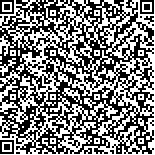| 引用本文: | 陈浩然,王紫宁,耿杰,张钧栋,智鹏,张昊军,李泓毅,张力中,吴胜男,卢学春,贺培凤.急性髓系白血病铁死亡相关基因筛选及预后模型的建立[J].生物信息学,2023,21(2):128-137. |
| CHEN Haoran,WANG Zining,GENG Jie,ZHANG Jundong,ZHI Peng,ZHANG Haojun,LI Hongyi,ZHANG Lizhong,WU Shengnan,LU Xuechun,HE Peifeng.Screening of genes related to ferroptosis in acute myeloid leukemia and establishment of a prognostic model[J].Chinese Journal of Bioinformatics,2023,21(2):128-137. |
|
| |
|
|
| 本文已被:浏览 909次 下载 749次 |

码上扫一扫! |
|
|
| 急性髓系白血病铁死亡相关基因筛选及预后模型的建立 |
|
陈浩然1,王紫宁2,3,耿杰4,张钧栋2,3,智鹏3,张昊军4,李泓毅2,3,张力中4,吴胜男1,卢学春3,贺培凤1
|
|
(1.山西医科大学 管理学院,山西 晋中 030606;2.解放军医学院,北京 100853; 3.中国人民解放军总医院 第二医学中心血液科,国家老年疾病临床医学研究中心,北京 100853;4. 山西医科大学 基础医学院,山西 晋中 030606)
|
|
| 摘要: |
| 基于急性髓系白血病(Acute Myeloid Leukemia,AML)临床大数据及多组学数据库探讨铁死亡相关基因在AML中的作用,并建立铁死亡基因表达相关预后模型。整合TCGA数据库中151例AML患者和GTEx数据库中337例正常人外周血的临床和转录组数据。将Wilcoxon检验和单因素Cox分析结果取交集,筛选出预后相关差异表达基因(Differential Expression Genes, DEGs),使用Lasso回归建立基因标志物预后模型,利用受试者工作特征曲线(Receiver Operating Characteristic Curve,ROC曲线)评价预测价值,Kaplan-Meier法进行生存分析,对AML患者临床数据进行单因素和多因素Cox回归分析,使用差异基因表达分析等方法比较高、低风险患者间的组学差异,最后,利用BeatAML数据库对基因标志物进行验证。将差异基因表达分析和单因素分析结果取交集,得到13个预后相关DEGs。构建了8个基因标志物的预后评分模型,并将患者分为高、低风险两组;ROC曲线分析证实了模型良好的预测性能;生存分析提示高、低风险组患者的生存率具有显著差异;单因素分析显示年龄和风险评分与患者整体生存显著相关,多因素分析显示,年龄和风险评分是独立预后指标。在2个风险组之间筛选出384个DEGs,GO富集分析结果显示,富集的基因大多与中性粒细胞和白细胞的趋化与迁移等免疫相关分子和通路显著相关,KEGG富集通路主要与TNF信号通路、细胞因子与细胞因子受体相互作用相关。BeatAML数据库验证结果显示,5个基因与预后显著相关。铁死亡相关基因在AML中显著表达,且高风险患者预后较差,该研究对AML铁死亡相关潜在生物标志物的发现和应用奠定了一定的基础。 |
| 关键词: 急性髓系白血病 铁死亡 转录组 预后模型 |
| DOI:10.12113/202206015 |
| 分类号:Q344+.14 |
| 文献标识码:A |
| 基金项目:2019年度保健专项科研课题(No.19BJZ28);国家重点研发计划(No.2020YFC2002706);山西省重点研发计划(社发领域)重点项目(No.201903D311011). |
|
| Screening of genes related to ferroptosis in acute myeloid leukemia and establishment of a prognostic model |
|
CHEN Haoran1, WANG Zining2,3, GENG Jie4, ZHANG Jundong2,3, ZHI Peng3, ZHANG Haojun4, LI Hongyi2,3, ZHANG Lizhong4, WU Shengnan1, LU Xuechun3,HE Peifeng1
|
|
(1.School of Management, Shanxi Medical University, Jinzhong 030606, Shanxi, China; 2. Chinese PLA Medical School, Beijing 100853,China; 3. National Clinical Research Center for Geriatric Diseases,Department of Hematology of the Second Medical Center, Chinese PLA General Hospital, Beijing 100853, China; 4. Basic Medical College, Shanxi Medical University,Jinzhong 030606, Shanxi, China)
|
| Abstract: |
| On the basis of the acute myeloid leukemia (AML) clinical data and multi-omics database, the role of ferroptosis-related genes in AML was explored, and a prognostic model related to gene expression of ferroptosis was established. The clinical and transcriptomic datasets of AML and controls were obtained from TCGA [AML (n=151)] and GTEx [whole blood (n=337)]. The Wilcoxon test and univariate Cox analysis results were intersected to screen out differentially expressed genes(DEGs) related to prognosis, and Lasso regression was used to build a gene signature prognostic model. Receiver operating characteristic(ROC) curve was used to evaluate the predictive value of the model, the Kaplan-Meier method was utilized for survival analyses, univariate and multivariate Cox regression analysis of clinical data were performed, and differential gene expression analysis and other methods were adopted to compare transcriptomic differences between high and low risk patients. Finally, the gene signatures were validated using the BeatAML database. Results of differential gene expression analysis and univariate analysis were intersected to obtain 13 prognosis-related DEGs. A prognostic scoring model of eight genes was constructed, and the patients were divided into high and low risk groups. ROC curve analysis confirmed the good predictive performance of the model, survival analysis showed that the survival rates of patients in the high and low risk groups were significantly different, univariate analysis revealed that age and risk score were significantly associated with overall patient survival, and multivariate analysis demonstrated that age and risk score were independent prognostic indicators. A total of 384 DEGs were screened between the two risk groups. The GO enrichment analysis showed that most of the enriched genes were related to immune-related molecules and pathways such as chemotaxis and migration of neutrophils and leukocytes. The KEGG enrichment pathway was mainly related to the TNF signaling pathway, cytokine and cytokine receptor interaction. The validation using the BeatAML database showed that five genes were significantly associated with prognosis. Ferroptosis-related genes are significantly expressed in AML, and high risk patients have a poor prognosis. This study lays a foundation for the discovery and application of potential biomarkers related to ferroptosis in AML. |
| Key words: Acute myeloid leukemia Ferroptosis Transcriptome Prognostic model |
|
|
|
|






